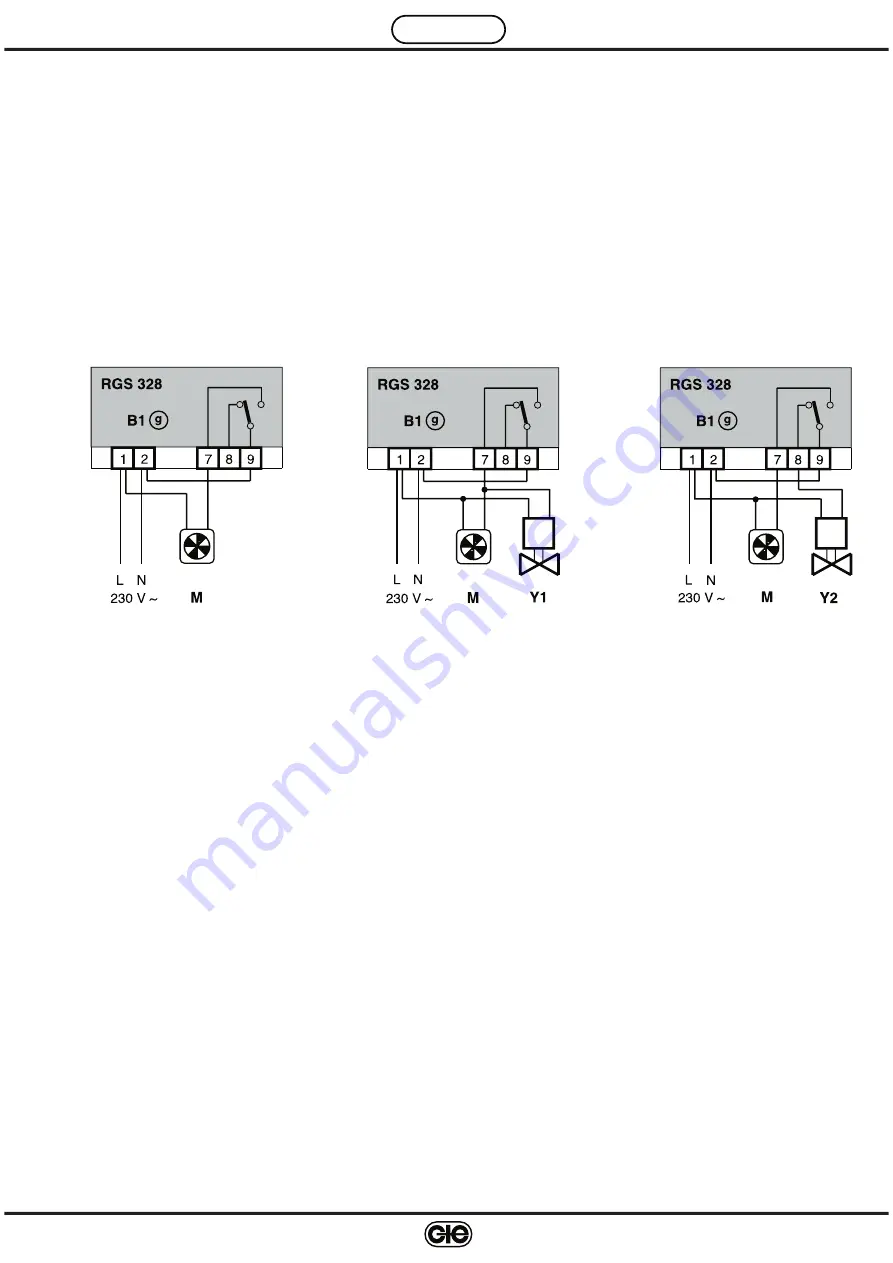
3
G 227 - RGS 328 Eng.
25.11.08 MZ
REV. 01
We reserve the right to make changes without notice
COSTER
8. ELECTRICAL CONNECTIONS
IMPORTANT
: The detection system must always be in operation and so the electric power must come directly from
the mains supply without the interposition of switches or other devices which could inadvertently
render it inactive.
For the electric wiring use 1.5 mm
2
section cables.
9. WIRING DIAGRAMS
Warning: RGS 328 detector is not fi tted with an alarm latching device so that it cannot be used to control
Normally-closed gas shut-off valves.
B1 – Internal sensor of detector
M – Air extract fan
Y1 – Normally-open solenoid valve with manual reset
Y2 – Normally-closed solenoid valve with manual reset
Control of an air extract
fan
Control of an air extract fan
and a normally-open valve
with manual reset
Control of an air extract fan
& of a normally-closed valve
with manual reset
10. OPERATION
10.
1
Switching on
The detector does not acquire, and therefore does not signal, alarms for the first two minutes of operation.
This is the time necessary for the gas sensing element to reach full working order and become stabilized so that the
reading can be considered correct and reliable.
During this period the green LED (4.
5
), which indicates the presence of power, lights intermittently; after this
stabilization period the green LED remains lit and the detector is ready for the detection of the gas.
Signalling a normal situation
The power supply LED (green) must be lit, whilst the LEDs for signalling a fault (yellow) and pre-alarm-alarm (red)
must be unlit.
The acoustic alarm must be off and the output relay switched off.
10.
2
Preallarm and alarm thresholds for carbon monoxide CO
The danger of carbon monoxide does not lie in its infiammability or potential explosiveness, but in its high toxicity.
Moreover, its danger does not depend only on the concentration of gas in the air but also on the length of time a
person remains in an atmosphere in which this gas is present.
For this reason there are different ways in which the detector can act, that is:
— concentration <0.005% (50 ppm):
the safety of the persons present is ensured for an indefinite time
and so the detector takes no action
— concentration 0.005…0.01% (50…100 ppm): within this concentration range the sensor and the detector for 60
minutes signal a “pre-alarm” situation; when this period has elapsed
they pass to the “Alarm” condition.
— concentration 0.01…0.03% (100…300 ppm):
within this concentration range the sensor & the detector
for 10 minutes signal a “pre-alarm” situation; after this period has
elapsed they pass to the “Alarm” condition
— concentration >0.03% (300 ppm): the safety of the persons present is not guaranteed. The sensor and the
detector immediately signal the “Alarm” condition.






















